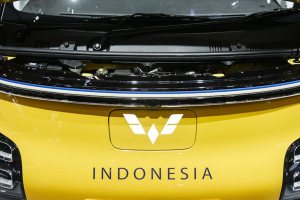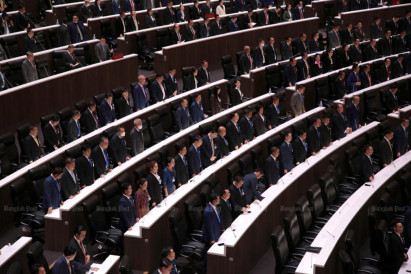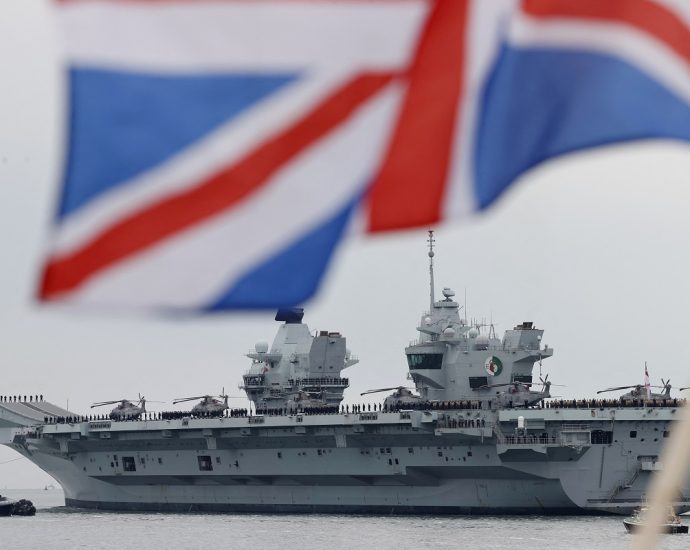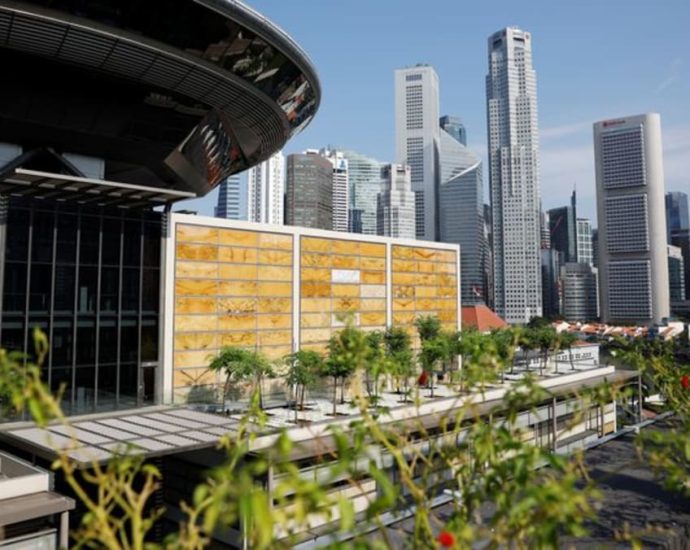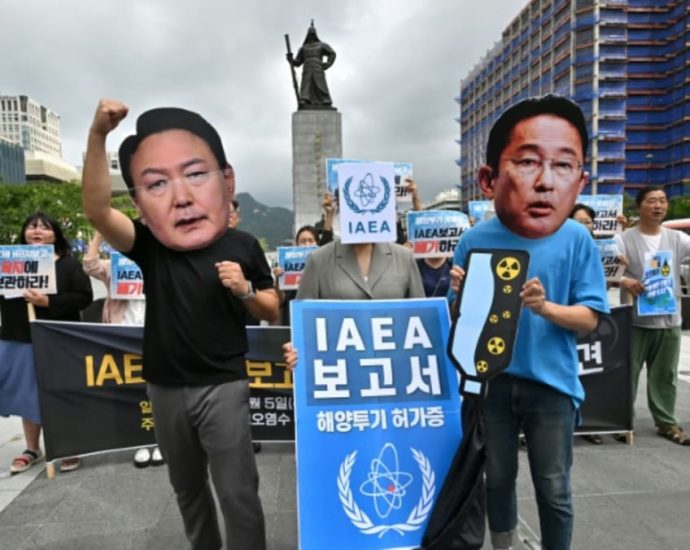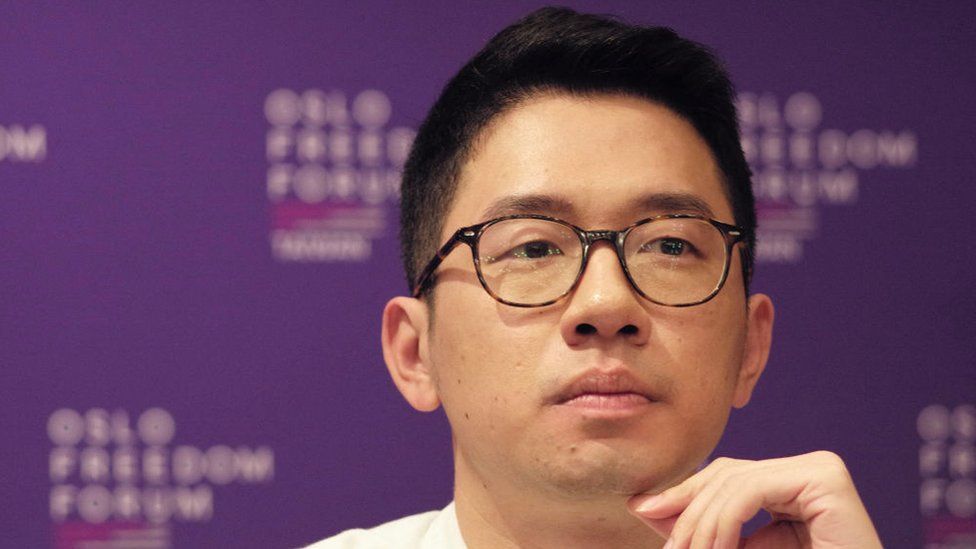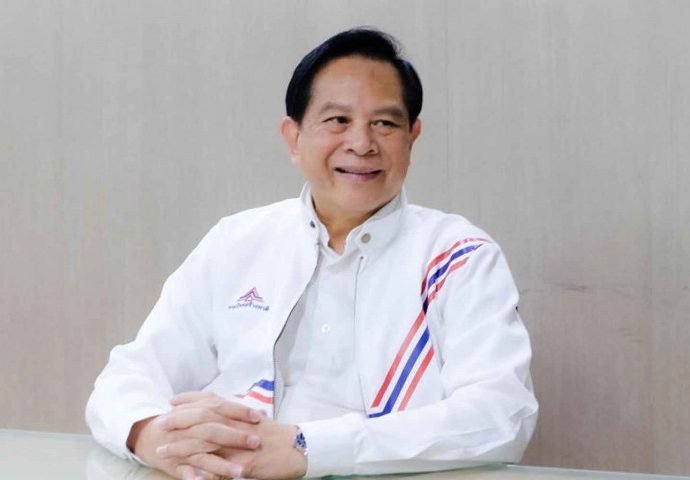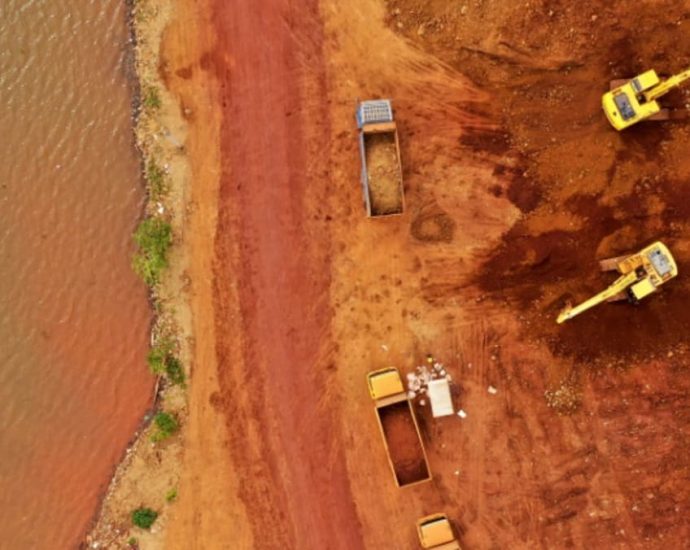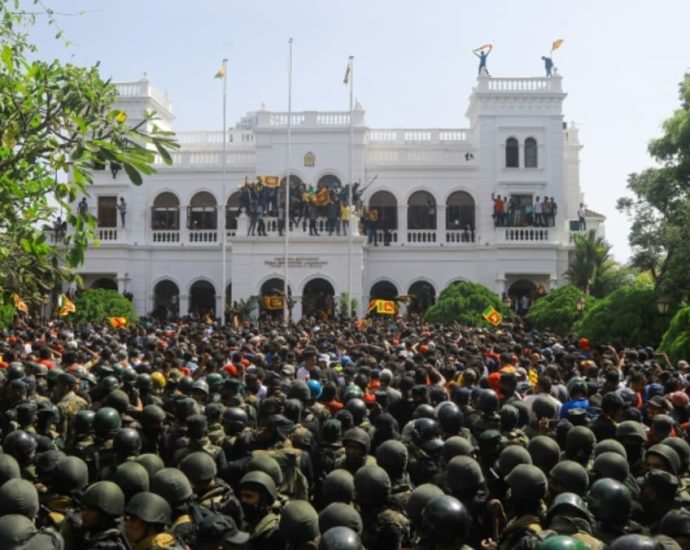Australia-Indonesia in a budding EV symbiosis
JAKARTA – As the first and only Indonesian leader with a commercial background, albeit from the heartland of rural Java, President Joko Widodo’s preoccupation with the economy and attracting foreign investment always dominates his agenda on trips abroad.
So it was with his latest visit to Australia, but with an important difference. Buoyed by the rapid growth of the electric vehicle (EV) industry, there are signs the two giant neighbors may have finally found the basis for a stronger and more sustainable relationship.
“I think this will be a massive transformation of the bilateral economic space because it has bigger implications,” former Australian diplomat Kevin Evans, director of the Australia-Indonesia Centre, told the Australian Broadcasting Corp (ABC).
“It’s not just about the Australia-Indonesian corridor,” he said. “It’s actually about doing things together that allows a move into much bigger markets around the region and the world.”
It will also depend on the active involvement of the Indonesian private sector and willingness of Indonesia-based companies to take a stake in West Australian lithium mines to shore up their supply chains.
“It will depend on Indonesia understanding that things are done here on a commercial basis,” says one Australian official, noting the Indonesian government’s interventionist role in making things happen in its economy. “It will still take time and a lot of effort.”
Prime Minister Anthony Albanese, who scored points with Widodo by making Jakarta his first port of call after he was sworn in last year, spoke of the often-turbulent relationship as “shifting up a gear.”
Central to that is the potential symbiotic partnership that could develop around EV batteries and Indonesia’s interest in importing Australian lithium, which along with some rare earth minerals is the one significant component it lacks.

Shortly before the leaders met, the Indonesian Chamber of Commerce and Industry (Kadin), signed a so-called Action Plan with the state government of West Australia, to bring both parties closer together in the critical minerals sector.
“The signing of the action plan is essential to seize opportunities and gather all parties involved in the critical mineral sector with those parties who will support them financially to realize more concrete cooperation,” said Indonesian Economic Coordinating Minister Airlangga Hartarto.
Australia is the world’s largest lithium producer, with last year’s output totaling 61,000 tonnes, or nearly half of global production, as trade in all EV battery ingredients – and their prices – rises significantly.
About 96% of Australia’s lithium exports last year went to China, which accounts for 58% of global lithium processing capacity and nearly 80% of global lithium battery manufacturing capacity, a dominance that worries the US.
Analysts say the lithium trade provides an opportunity to take full advantage of the 2020 Indonesia-Australia Comprehensive Economic Partnership Agreement (IA-CEPA), which aims to unlock the trade and investment potential of both countries.
Under one of four side agreements, A-CEPA provides Indonesian companies with preferential access to the Australian market by lowering the level of Australian content required in EV battery manufacturing.
Indonesian firms are understood to have had initial discussions with the owners of several West Australian lithium mines, but the only signed deal so far is an MOU between state-owned holding company MIND ID and Australian salt and potash supplier BCI Minerals.
In Indonesia, United Tractors, a subsidiary of car-maker Astra International, is taking a 19.99% interest in Australian-owned Nickel Industries Ltd, which supplies nickel ore to the Morawali and Weda Bay smelters in Central Sulawesi and Maluku.
Despite their proximity, Indonesia counts Australia as its 15TH top trading partner with imports last year of just US$3.5 billion, lagging Bangladesh ($3.9 billion) and Pakistan ($4.3 billion).
Australia, on the other hand, puts last year’s figure of Australian exports to Indonesia at $12.4 billion and Indonesian imports at $5.9 billion, a trade deficit in goods that Jakarta regularly complains about to Canberra’s bemusement.
The discrepancy is explained by the fact that Indonesia doesn’t take services into account, including money spent by the 1.2 million Australian tourists who are now flocking back to Bali after the Covid hiatus.
More than that, Indonesia ranked 27th as a destination for sluggish Australian foreign investment, much of it in the mining sector, and a lowly 38th place as a source of investment to Australia.

Australian officials say one significant impediment is the Indonesian mindset that it is unpatriotic to invest in other countries, one of many factors that expose over-regulated Indonesia’s failure to sell itself on the world stage.
Former ambassador to Jakarta John McCarthy has noted the absence of any real diplomatic crisis in recent years in a relationship once marred by heated disputes over East Timor and Papua and also by the execution of two Australian drug traffickers in 2015, the year after Widodo came to power.
“If this lack of fireworks continues, we should be diverted even less by the need for crisis management and be able to focus more on what we want from the relationship,” McCarthy wrote in the Australian Financial Review.
New PM expected within 3 parliament sessions
Pheu Thai MP says some senators expressed their support for government formation

The new prime minister is likely to be installed within the first three joint sessions of the House of Representatives and the Senate, scheduled for the next two weeks, said Deputy House Speaker-elect Pichet Chuamuangphan.
Mr Pichet said on Thursday that the three sessions were planned for July 13, 19 and 20, and they should provide enough time for the election of the new prime minister.
The coalition allies, consisting of eight political parties that favour Move Forward Party (MFP) leader Pita Limjaroenrat as the next prime minister, currently hold 312 votes in the House. The alliance will still need the support of 64 legislators to secure the 376 votes necessary to endorse Mr Pita, whose party won the May 14 general election with 151 House seats.
The constitution allows 250 senators to vote for the new premier along with 500 House representatives.
“The vote was initially set for July 13, but if it fails, there will be a second voting session on July 19 and a third round on July 20,” said Mr Pichet, who is also the Pheu Thai Party MP for Chiang Rai province. “I think the three days should be enough to determine the prime minister.”
Three sessions were planned at this stage due to the difficulty of scheduling a meeting with all the 750 members of both the lower and upper chambers of the House, said the Pheu Thai member.
When asked if Pheu Thai would lead the coalition if the three sessions fail to make Mr Pita as the prime minister, Mr Pichet said that would depend on the parliament and eight coalition parties.
“The eight coalition parties will comply with their MoU (memorandum of understanding) by continuing to stick together. There will be internal discussions and there should not be any problem,” Mr Pichet said.
He also said that he was unsure how many senators would vote for Mr Pita. He said he had conversations with some senators who expressed their support for government formation for national development.

Deputy House Speaker-elect and Pheu Thai Party MP Pichet Chuamuangphan. (Photo: Chanat Katanyu)
New UK warship design speaks to Indo-Pacific ambitions
The UK has just unveiled its next-generation sea destroyer concept, an ambitious design that speaks to the nation’s renewed Indo-Pacific naval ambitions but may ultimately founder on financial and military constraints.
This month, the UK Defense Journal reported that the Royal Navy’s Type 83 destroyer’s concept art was revealed at a naval conference, offering clues to its capabilities. The type is slated to enter service in the 2030s.
The concept art shows a hull shape that prioritizes stealth and speed, with a streamlined superstructure and integrated mast suggesting advanced radar and sensors integration, featuring the CEAFAR active electronically scanned array (AESA) radar.
The Type 83 will be comparable in size to China’s Type 055 cruiser, armed with a five-inch gun, Phalanx close-in weapons systems (CIWS), two 30 or 40-millimeter guns, additional unidentified CIWS and a significant missile payload.
The destroyer’s missile payload will be divided into two sets of Mk 41 vertical launch cells (VLS) at the front and midships, with each section holding an estimated 64 VLS for a carrying capacity of 128 missile cells per ship.
In a separate article, UK Defense Journal reported last month on the destroyer’s futuristic capabilities and envisioned roles. The Type 83 will form part of a distributed sensor network called the Future Air Dominance System, which is anticipated to use directed energy weapons such as lasers and complex radar-sensing capabilities for fleet air defense.
The Type 83 will most likely succeed the Type 45, which reportedly suffers from many issues.
In a July 2021 article, Military Watch reported that the Type 45 destroyers had been maligned for having low availability rates, high maintenance needs, and risk of breakdowns when operating in warmer waters.

The report also said the class is considered as lacking versatility and firepower, with just 48 VLS versus the 96 carried by the US Arleigh Burke and Japan’s Maya-class destroyers and over 100 VLS carried by South Korea’s Sejong the Great destroyers and China’s Type 055 cruisers.
Military Watch reported in a separate April 2021 article that the Type 45 is not apt for basic ballistic missile defense, as the class was initially envisioned as an air defense destroyer.
That report notes that on top of their relatively small missile armament, the Type 45’s VLS can only carry Aster 15 and Aster 30 missiles, which are designed strictly for anti-air roles.
That lack of anti-ballistic missile defense capability, the source notes, could be a liability for the ships’ planned deployments to East Asia, where China and North Korea field the DF-26 and Hwasong-12 anti-ship ballistic missiles.
The Type 83’s development may also be spurred on by the UK’s new Indo-Pacific and wider global naval ambitions.
In an August 2021 War on the Rocks article, Alessio Pantano notes that the Royal Navy’s July 2021 deployment of the HMS Queen Elizabeth carrier strike group in the South China Sea marked a decisive step in the UK’s long-term renewal of its military capabilities.
That deployment, Pantano notes, showed the UK’s acknowledgment that great power competition is back, with China as a “pacing challenge” for the US and UK. The deployment signaled a major strategic shift toward a maritime-leaning posture as the UK aims to reassure partners and signal firmly to adversaries in the region.
The UK’s 2022 National Strategy for Maritime Security mentions that the country will work with allies, partners and multilateral institutions to secure a free and open Indo-Pacific. The strategy says the UK has deployed two Offshore Patrol Vessels (OPV) since 2021, a Littoral Response Group from 2023 and a Type 31 Frigate later in the next decade.
That maritime strategy speaks to the global ambitions mentioned in the UK’s March 2021 Integrated Review, which succinctly states the UK’s intention to remain one of the most influential countries in the world, a declaration of commitment to upholding Western liberal democratic values. It reaffirms the UK’s “special relationship” with the US, stressing the critical importance of the US-UK alliance.
However, military overstretch and funding issues may keep the UK’s lofty global ambitions at bay.
In an April 2023 article for Stiftung Wissenschaft und Politik, Nicolai von Ondarza and Dominik Rehbaum note that the British Armed Forces are struggling with equipment problems after 20 years of operations in Iraq and Afghanistan.
The writers suggest that the UK’s drive to maintain a strategic presence in Europe and the Indo-Pacific could result in military overstretch.
They also note that while the UK is one of Ukraine’s top suppliers of advanced weapons in its ongoing war with Russia, it is still unclear whether and when the UK can deliver all its promised military equipment.

While UK Defense Secretary Ben Wallace has called for a long-term increase in the UK’s defense spending to 3% of gross domestic product (GDP), Prime Minister Rishi Sunak’s financial policies set a goal of 2.5% “as fiscal and economic circumstances allow.” Funding shortfalls may thus hobble the UK’s Indo-Pacific ambitions, including its construction and deployment of Type 83 destroyers.
Von Ondarza and Rehbaum note that of the additional 5 billion pounds (US$6.4 billion) allocated for defense spending over the next two years, 3 billion pounds will go to nuclear deterrence, including Australia’s nuclear submarines under the AUKUS framework, and 2 billion pounds to replenish military equipment stockpiles in Ukraine.
The writers also mention that, as of March 2023, the UK has sent 4.3 billion pounds worth of military equipment to Ukraine, expenses that are cutting into the British Armed Forces’ budget and short-changing its Indo-Pacific ambitions with a smaller, less capable and financially-constrained force.
Murder trial: Stepmother testifies about âabnormalâ assault of 5-year-old girl, accused cries at footage

SINGAPORE: The wife of a man accused of beating his five-year-old daughter to death testified in court on Thursday (Jul 6) about the “abnormal” way her husband would hit the girl.
The prosecution played closed-circuit television footage of the 43-year-old man striking, punching and kicking the girl, who was clad only in a diaper, in one of the routine beatings that occurred before the fatal assault.
The girl appeared terrified, crying and cowering against the corner in a bid to get away, with her legs shaking in fear, while her toddler brother sat quietly an arm’s length away from her with his head down.
The accused watched the footage with his head in his hands, later covering his face and breaking down.
The man, who cannot be named to protect the victim’s identity and her surviving brother, had claimed trial the day before to a charge of murder.
The prosecution’s case is that the man had ill-treated his daughter and son after they were returned to his custody in 2015.
While the man’s biological children were confined for most of the time in a small space, his wife’s biological daughters slept with her on a mattress and went to school.
The man’s wife, who is in the midst of divorcing him, took the stand for the prosecution.
She told the court that the deceased and her brother were first confined in a corner of the one-room rental flat for months.
It started out as a “naughty” corner, but they were soon confined there most of the time, being let out only for meals or occasionally when the accused was not around.
Later, they were transferred to being confined in the kitchen, and finally to the toilet as they kept playing with their diapers.
The woman testified that she had hit the man’s children five to six times in total herself.
Probed on why, she said one incident was when she saw the deceased eating faeces.
The court had heard a day before that the child was malnourished and skinny when she was presented dead at the hospital on Aug 12, 2017.
On another occasion, the woman returned home with the accused and found that the house was in a mess, with rubbish everywhere and the deceased holding onto a piece of rubbish.
She said she slapped the girl.
PROSECUTOR PLAYS FOOTAGE OF ABUSE
Deputy Public Prosecutor Norine Tan played a clip extracted from either the accused’s or his wife’s phone – they each had an application on their phones that showed live footage and recorded footage from CCTV cameras they set up where the deceased and her brother were confined.
The clip showed the girl and her brother clad only in diapers, sitting down pressed against the wall. The area was fenced off by a bookshelf and a wardrobe, with only a small space for a parent to enter.
At the time, the girl was about four years old and her brother was a year younger.
The accused was shown entering the small space – which was barely big enough to accommodate him and the two kids.
The girl stared at him in fear and pressed up against the wall to avoid him, but the accused was shown picking her up by her hair and punching her, before he squatted to her level and elbowed her strongly in the face.
The girl fell to the floor from the blows and curled up on her side. Her diaper came off partially after her father kicked her multiple times, swivelling on his heel to add force to the kicks.
He then retrieved a long object resembling a cane or ruler and hit her repeatedly.
The assault in the 10-minute-long video continued until the man picked up the girl’s brother and placed him just outside, but the boy continued to look at the assault on his sister.
At some point, the man used a wet tissue to clean off blood from his daughter. The last portion of the video showed the man changing the girl’s diaper.
The prosecutor asked the accused’s wife how she felt about the two children being in the corner.
WITNESS SAYS SHE FELT SAD
“To be honest, I do feel sad for them,” said the woman.
“Then why did you not stop (him) from keeping them there?” asked Ms Tan.
“I have … like … told him before marriage that he take care of his own kids, I take care of my own kids,” said the woman, who was stepmother to the deceased and her brother.
She said the accused would hit the two children with his hands, slapping and punching them, or cane them. Usually it was because they tore up their diapers.
She said she would try to stop him when he was agitated or really angry, “because the way he hit, is really abnormal”.
“The way he punch or hit is like, non-stop, or really look like … not him. When he’s too angry or frustrated, he is like (a) different person, he won’t know what’s happening around him,” said the woman.
She said her husband had gone for anger management counselling before.
She added she would not do anything to stop him other than shouting when he was like this because he would hit or push away whoever was around him.
On questioning by Ms Tan, the accused’s wife admitted hitting the deceased and her brother a few times. Asked how she felt, she said: “I feel guilty. I feel sad. I feel remorseful for hitting.”
“If you felt bad then why did you hit them again up to five or six times?” asked Ms Tan.
“It’s because they wanted to eat faeces and didn’t listen to me,” answered the woman.
She said that the two kids were first confined with diapers on in the toilet, but her husband later removed the diapers because the kids were playing with them.
She said she felt sad and remorseful about the two kids being confined in the toilet, but said she did not stop her husband because of what she had said to him before marriage – “Your kid is your kid, my kid is my kid.”
THE FATAL INCIDENT
The accused’s wife described what happened the day the deceased was allegedly beaten to death.
On the night of Aug 10, 2017, the accused asked her to get the kids to exercise, because they had been lying on the toilet floor all day.
She entered the toilet and asked the two kids to do squats while holding the sink. While the boy complied, the girl did not.
The woman went out and asked her husband to continue what he wanted her to do and walked off to a mattress where she slept with her own two daughters.
Her husband, who was in a chair in the living room, retrieved a cigarette before heading to the toilet.
“At first there was no sound, followed by increasing voice,” said the woman.
After some loud, indecipherable shouts, she heard a loud bang.
Her own two daughters were frightened and hugged her, so the woman went to check what happened as it was unusual.
As she rushed to the toilet, she heard the deceased’s loud crying “decrease” in volume.
She saw the girl squatting down, crying and whimpering in the toilet.
When she asked her husband what happened, he said he had hit and punched her. However, because the woman did not see any bruise or blood on the girl, she went back to the mattress to attend to her own crying daughters.
Her husband joined her a few minutes later and said he wanted to send his children to the Ministry of Social and Family Development (MSF). He said he wanted to “make them healthy” before putting them up for adoption, something he had mentioned before.
That night, the accused and his wife played with his wife’s daughters before heading to bed.
Before the woman fell asleep, she heard her husband’s son crying in the toilet, so she looked at the CCTV footage on her phone, which showed the girl turning as she lay down.
After this, she went to sleep.
The next day, the woman called in sick at work and spent most of the day sleeping on the mattress after passing her daughters to her husband for school.
The woman was three months pregnant with a son at the time.
At about 6 to 7pm, she needed to use the toilet and went to the washroom to ask the two children to wake up and go out.
“But (the girl) didn’t move,” said the woman. “So I (turned) on the water hose and put water on my hand and sprinkle on her face, but she still didn’t wake up, so I tap on her cheek. Her cheek was cold.”
She went out to call the accused, who checked on the girl before telling his wife that his daughter “is not there anymore”.
“After I heard that (the girl had) left, passed away, I cannot think of anything,” testified the accused’s wife.
She went to fetch her daughters from school, on her husband’s instructions, and returned to see her husband pacing in the flat, looking “blur and stressed out”.
She asked him if he had performed CPR on the girl, and he said he had, and tried to give her water, but the liquid just came back out.
“I said I didn’t want to go to prison, and I don’t want (my daughters) to go to the foster,” said the woman.
“Why did you think you may go to prison?” asked the prosecutor.
“Because I’m staying together with him, I’m married to him, and we are living in the same household and I’m not, like, protecting any of the kids,” said the woman.
She said she felt scared, sad and remorseful that her stepdaughter had died.
“And I didn’t even, like, do anything, like send her to doctor or hospital,” she said.
She said her husband later told her that he was going “to do a forced sex” and that he was going to hit her. Her husband asked her to report him to the police and ask for a personal protection order.
The trial continues.
If convicted of murder under Section 300(c), the man can be sentenced to death, or to life imprisonment with caning.
Protests in South Korea over Fukushima nuclear plant wastewater release

South Korea had sent its own experts to Fukushima in May to assess the situation, and the government is expected to share its own findings soon.
“Our internal review process has been ongoing for the past two years,” said Mr Park.
“The process is in its final stages. When we make our final announcement, we will provide an in-depth analysis of the IAEA report.”
Currently, South Korea still has a ban on imports of Japanese food products from areas around the Fukushima nuclear plant.
Japan has called on the South Korean government to lift the ban, but Seoul said the import ban will stay until concerns over the contamination issues ease.
Four arrested in Hong Kong after bounty set up for activists abroad
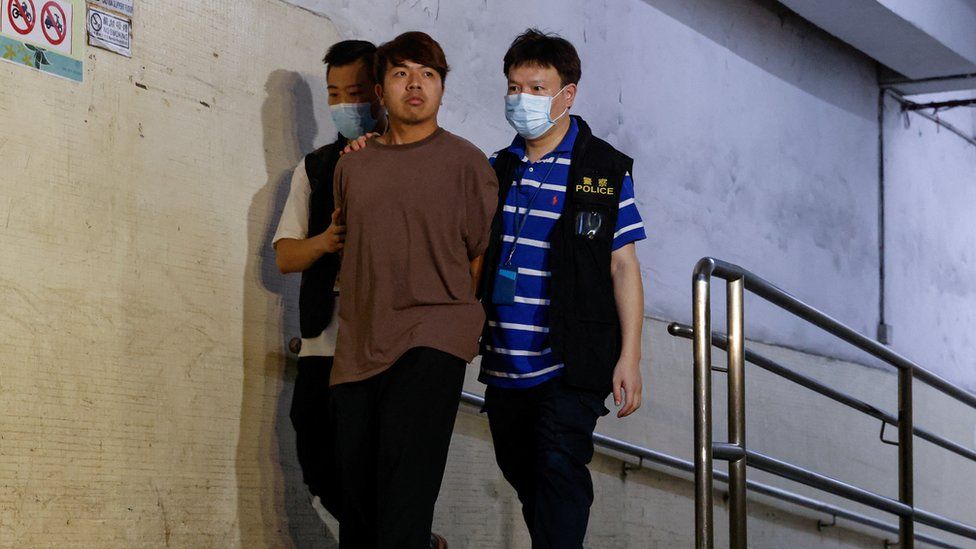 Reuters
ReutersHong Kong police have arrested four men whom they accuse of supporting people based overseas who “endanger national security”.
The local arrests come two days after Hong Kong put up bounties for eight pro-democracy activists living abroad.
The bounties have sparked an overseas outcry and follow a sweeping national security law imposed by Beijing.
The four arrested include Ivan Lam, the former chair of disbanded political party Demosisto, local media said.
Demosisto was co-founded by activist Nathan Law, who now lives in the UK and is one of the targets of this week’s bounty.
Earlier this week, Mr Law told the BBC that his life had immediately become more dangerous.
The eight subjects of the HK$1m (£100,581; $127,637) bounty are based in the UK, the US and Australia, countries that have no extradition treaty with China.
Hong Kong is a special administrative region of China. Under Beijing’s “one country, two systems” policy, the people of Hong Kong enjoy wider freedoms compared to those living in the mainland.
However, pro-democracy protests in 2019 paved the way for the national security law, which came into force in June 2020. Police have since arrested 260 people for violating it.
The four men arrested Wednesday night are accused of “conspiracy to collude with a foreign country or with external elements to endanger national security” and “conspiracy to doing acts with seditious intent”.
Their offences are punishable by life imprisonment under the national security law.
Also on Wednesday, police seized banners and flags of online shopping app Mee, that serves as a guide for Hong Kongers on restaurants, shops and service providers that support the pro-democracy movement.
Sidec launches Selangor Accelerator Programme 2023
Applications for startups are open from now until 4 August
The focus of this cohort is on AI, Net Zero, and Biotech
Selangor Information Technology and Digital Economy Corporation (Sidec) has announced the launch of the sixth cohort of the Selangor Accelerator Programme (SAP) 2023. This initiative is backed by the Selangor State…Continue Reading
UTN leader won’t compete for PM post

The United Thai Nation Party (UTN) will not nominate its leader Pirapan Salirathavibhaga as a prime ministerial candidate to compete against Move Forward Party (MFP) leader Pita Limjaroenrat, according to UTN secretary-general Akanat Promphan.
Mr Akanat posted a message on the UTN’s Facebook page on Thursday, saying his party’s nomination of its deputy leader Vittaya Kaewparadai to compete for the post of first deputy speaker of the House of representatives on Tuesday would not lead to the nomination of Mr Pirapan for the post of prime minister in the parliament on July 13.
The UTN would have been automatically considered as supporting MFP candidate Padipat Suntiphada to take up the position unless it had nominated Mr Vittaya to compete for the post, Mr Akanat wrote.
By law, a sole candidate for the House speaker and a deputy would be endorsed to assume the respective jobs without a vote in the House.
“We nominated (Mr Vittaya) to compete to clearly demonstrate our standpoint, although we knew well that there was a slim chance of victory,” Mr Akanat wrote.
Addressing the rumour that the UTN would present its leader to compete for the prime minister’s post, Mr Akanat dismissed it, saying that the party only had 36 House representatives, which is not enough to lead a coalition government.
“Mr Pirapan and I have never entertained the idea of supporting the formation of a government with a minority vote in the House. Such a government cannot last,” the secretary-general wrote.
Disapproval of a prime minister or government intending to amend or revoke Section 112 of the Criminal Code, also known as the lese majeste law, can be expressed by refusing to vote for, voting against, or abstaining in the vote for a prime ministerial candidate, he added.
“UTN is ready to be an opposition party… but will not amend Section 112, change the National Day or separate the (Thai) territory. We will strive for the further development of the positive aspects already existing in our country,” Mr Akanat wrote.

UTN secretary-general Akanat Promphan
NGO accuses Chinese renewables firms of abuses in 18 countries
JAKARTA: Chinese companies investing in minerals used in the renewable energy industry have been accused of more than 100 human rights and environmental abuses around the world since 2021, according to a report released on Thursday (Jul 6). China dominates the processing and refining of minerals critical to the transitionContinue Reading
President-toppling Sri Lanka activist girds for new revolt
“THEY HAD NO ALTERNATIVE” As head of the Inter-University Students’ Federation (IUSF) at the time, Mudalige stood at the forefront of last year’s street protests. Alongside him was a broad coalition of saffron-robed Buddhist monks, minority activists and ordinary citizens outraged by government corruption and mismanagement of the island’s worseningContinue Reading

